Anglo-Saxon warlord unearthed by metal detector hobbyists
He's called the 'Marlow Warlord.'
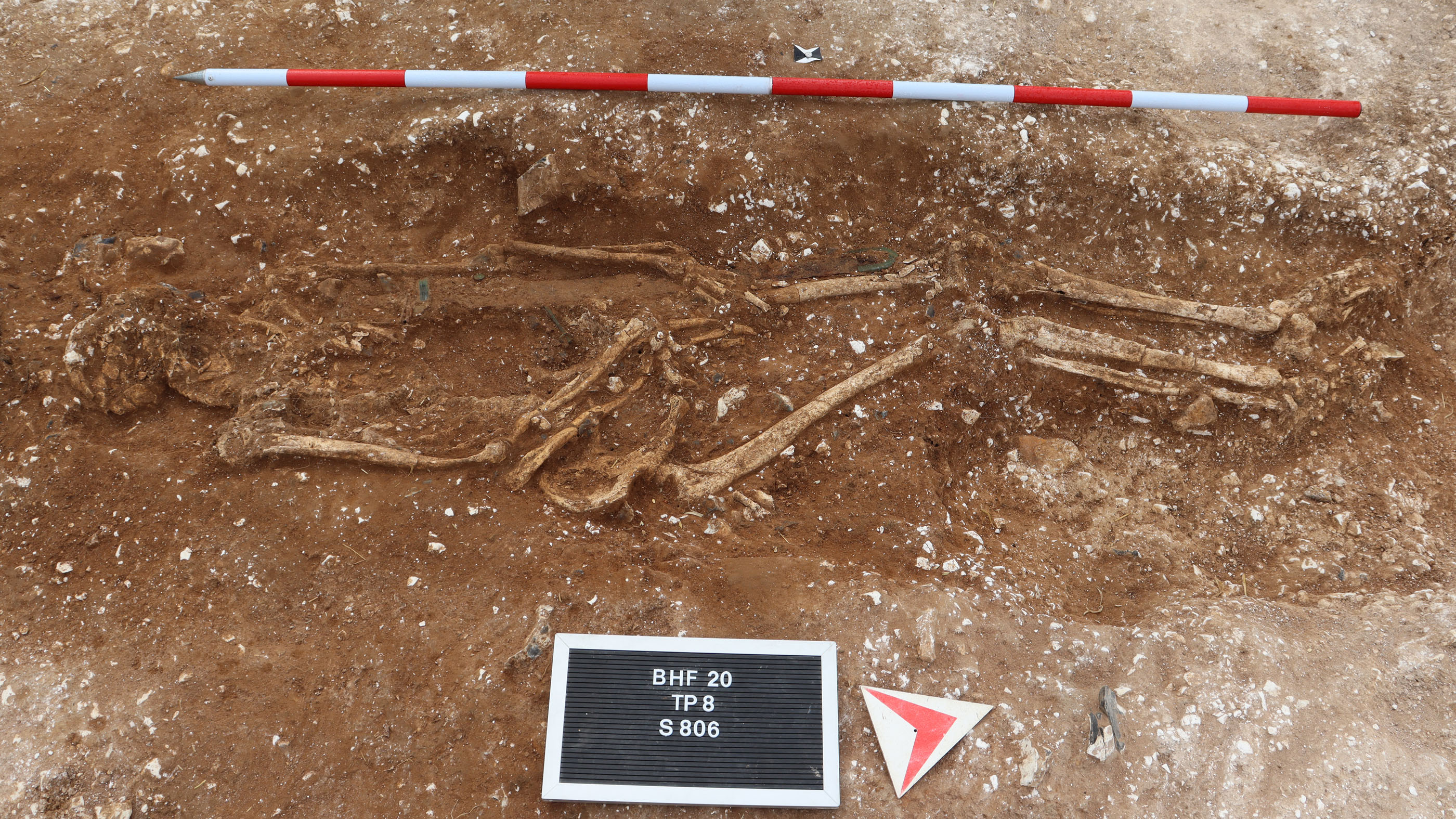
Archaeologists have unearthed the rich burial of a sixth-century man thought to be an Anglo-Saxon warlord in southern England, after it was first discovered by metal detectorists.
The skeleton of the man, dubbed the "Marlow Warlord" after the Berkshire town near where the remains were found, was buried with several weapons, including a sword in a decorated scabbard. He would have stood at about 6 feet (1.8 meters) tall at a time when the average male height in Britain was about 5 feet 7 inches (1.7 m). Archaeologist Gabor Thomas of the University of Reading in the U.K., who led the excavations at the site overlooking the central Thames Valley, said the burial shed new light on the politics of the region, which was thought until now to be a "borderland" between large Anglo-Saxon communities around London and Oxford, only decades after the collapse of Roman rule in Britain.
The new discovery suggests instead that the region was then more important than historians had suspected, with powerful Anglo-Saxon groups of its own that were ruled by high-status individuals, Thomas told Live Science.
Related: Photos: Stunning treasures from the burial of an Anglo-Saxon prince
The prominent burial site and the rich grave goods of the Marlow Warlord are evidence of his prestige, he said. "They're making a clear statement about this individual's leadership of this local tribe that lives in the area."
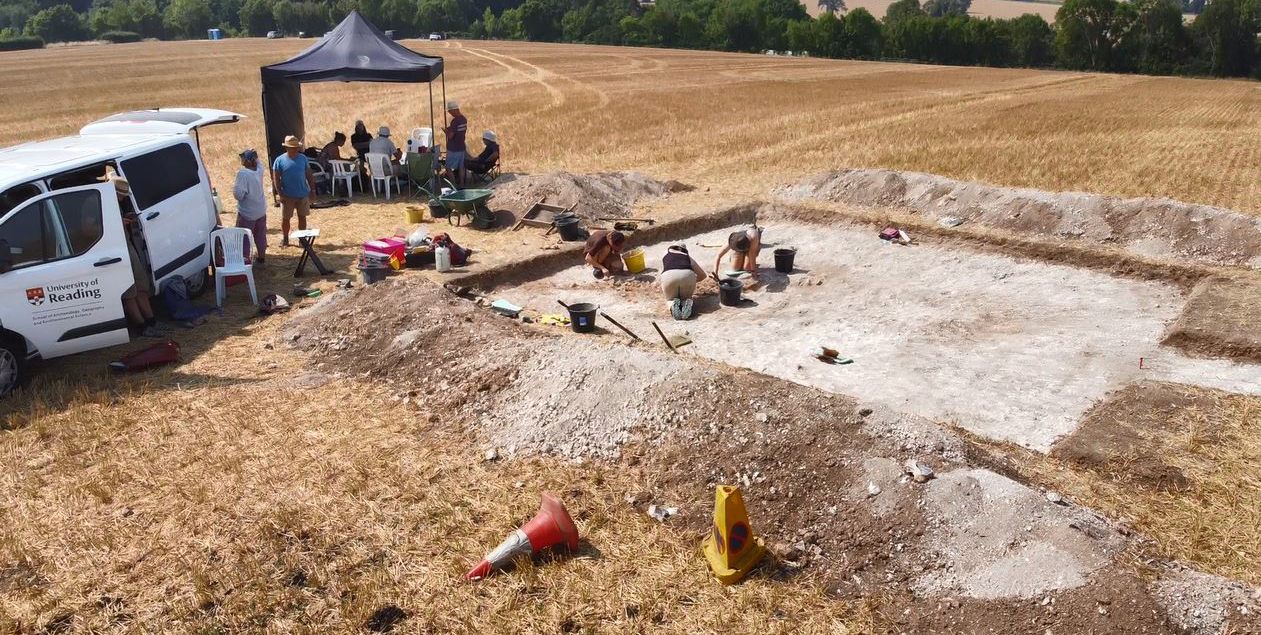

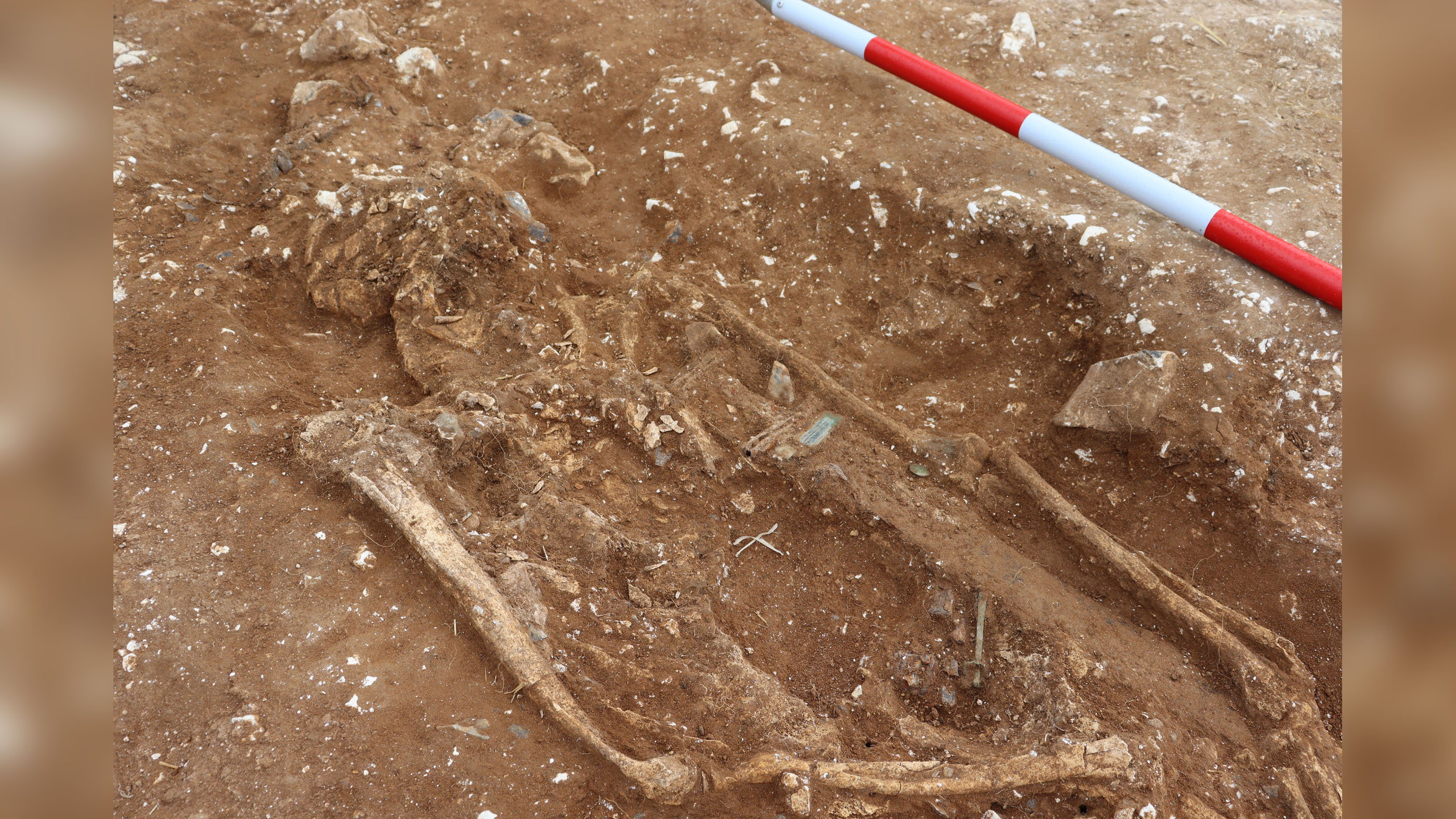
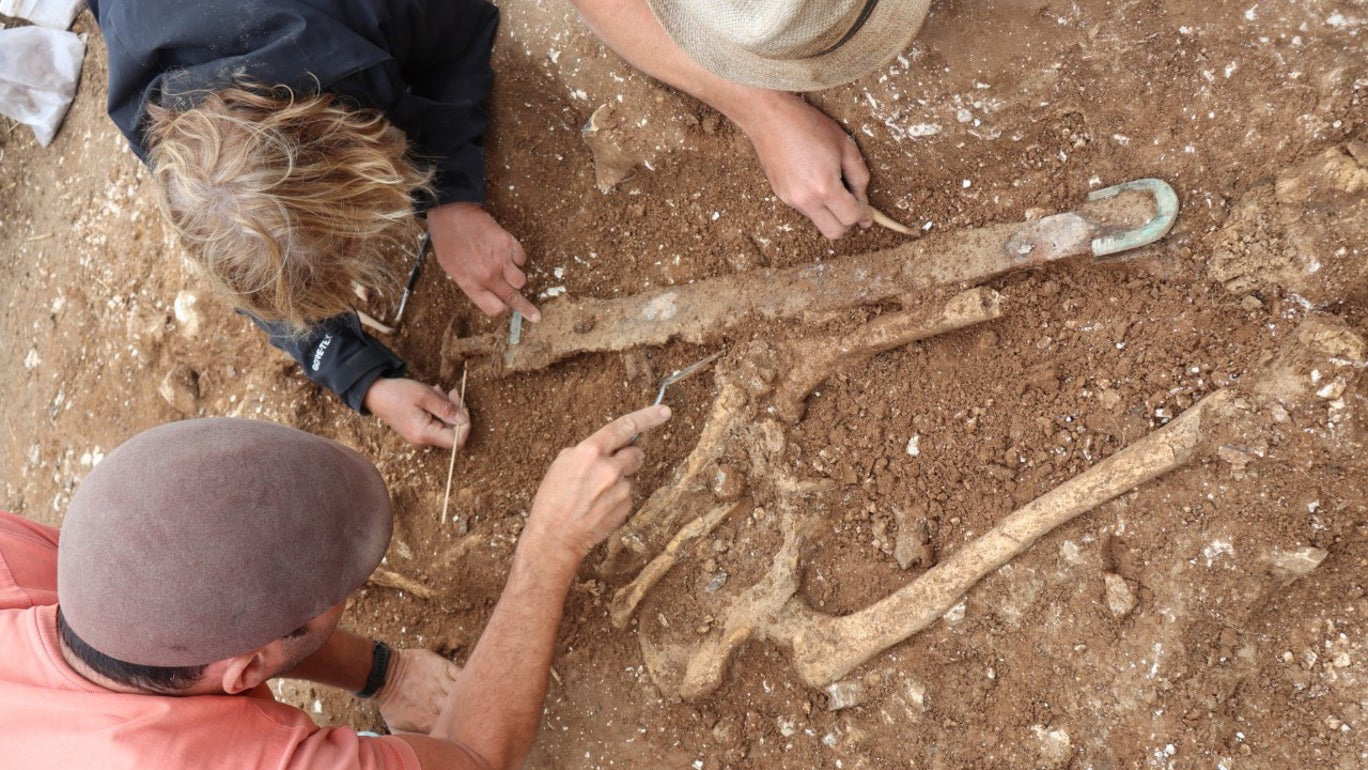
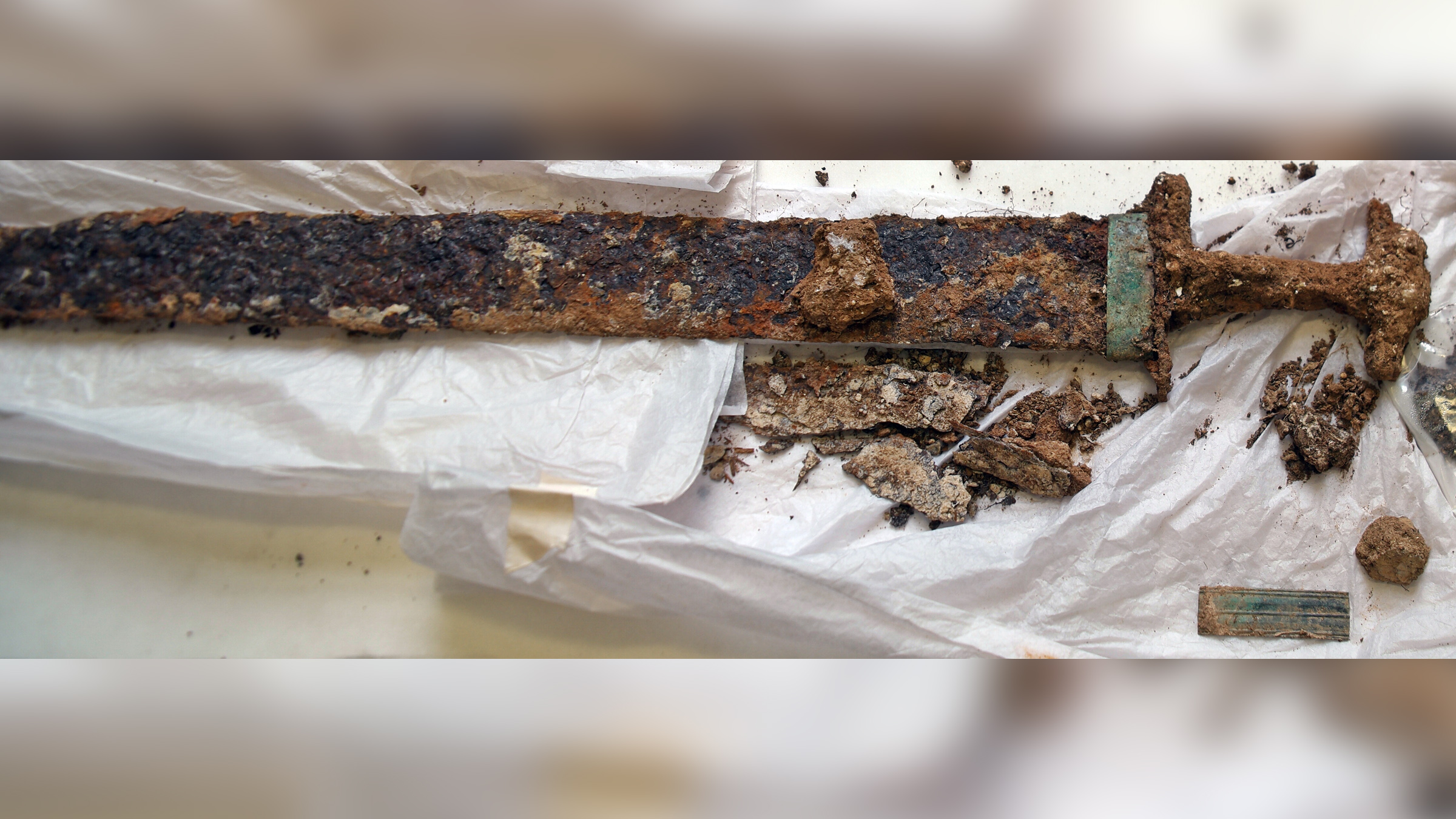
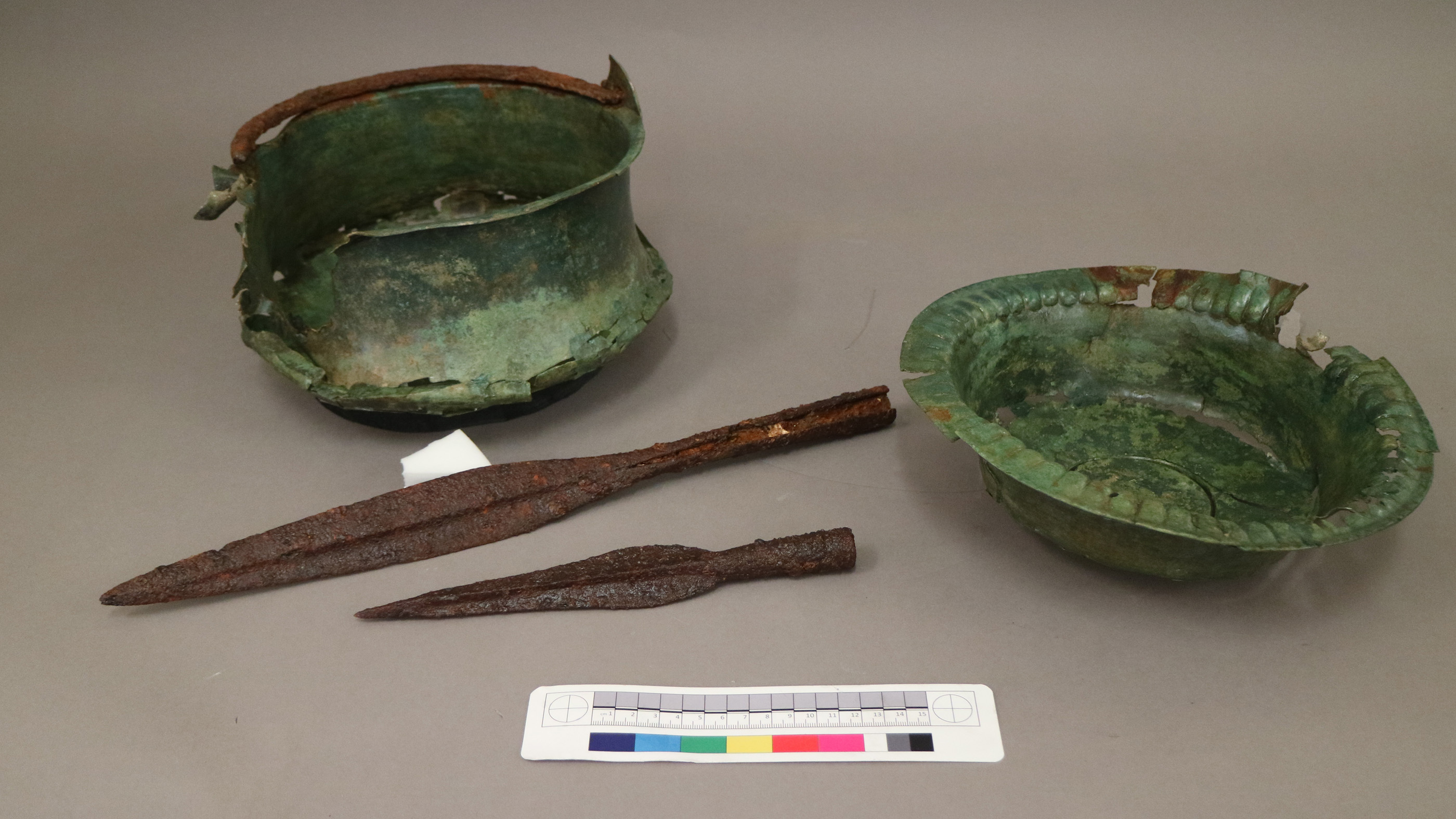
Ancient sword
Two amateur metal detectorists from the area, Sue and Mike Washington, discovered the ancient grave in 2018.
They'd made three trips to the site, with their equipment initially showing what appeared to be buried iron — something they thought was probably a fairly recent agricultural tool of little interest.
Sign up for the Live Science daily newsletter now
Get the world’s most fascinating discoveries delivered straight to your inbox.
On their last visit, however, they unearthed two bronze bowls, — and, realizing the significance of the find, registered their discovery with the Portable Antiquities Scheme (PAS) run by the British Museum and the National Museum of Wales, which records amateur archaeological finds.
A PAS archaeologist then investigated, recovering the bronze bowls and a pair of iron spearheads that suggested the site was likely to be an Anglo-Saxon grave. Those objects will soon go on display at the Buckinghamshire Museum in Aylesbury.

After that investigation, Thomas led a full excavation in August that revealed the skeletal remains of the Marlow Warlord, alongside the sword and other grave goods. The sword is made of iron and is held in a decorated scabbard made of bronze, leather and wood. Some of the leather has survived many centuries in the ground because it was protected by the corrosion of the iron blade — organic material like leather usually quickly rots away in the earth, so this is a rare find that can now be tested for any remaining genetic material, he said.
Related: The 22 weirdest military weapons
The scabbard also had a bronze fitting called a "chape" at the end, which showed a cut-mark where it might have been damaged by a warrior on foot who struck the wearer of the scabbard seated on horseback.
This suggested the sword was a working weapon, rather than just for show, he said. "It's quite an interesting piece of evidence that this person saw active combat."
Anglo-Saxon kingdoms
Several other items buried with the Marlow Warlord indicate his importance.
The bronze bowls were imported to Britain from what is now Belgium or France, which suggested he had far-reaching connections, Thomas said. The glass vessel was also a very rare find from the period — glass was relatively common under Roman rule, but it is seldom found at early Anglo-Saxon sites — while the sword itself must have been made by an expert craftsman.
Related: The 25 most mysterious archaeological finds on Earth
"He's clearly able to acquire special and important objects that he used in life, and which were taken with him to the grave," he said.
The styles of the bowls and the glass vessels suggest the grave dates to the sixth century — less than a century after the end of Roman rule in Britain and a time of great change.
Thomas and the University of Reading are now running a crowdfunding campaign to carry out chemical and genetic tests on the objects in the Marlow Warlord's grave — that could more firmly date its age.
"In the sixth century, you start to get [Anglo-Saxon] kingdoms emerging," Thomas said. "Upstream of where we are talking about, you've got the kingdom of Wessex, which develops into probably the strongest kingdom of post-Roman England."
"You've also got kingdoms downriver, including the kingdom of Kent, that start muscling-in and trying to acquire territory."
"What is clear that you've got a local autonomous tribe here, with war leaders — it doesn't take off into a kingdom like Wessex and Kent, but that's probably an historical accident," he said. "Clearly it had the conditions to take off in that direction."
Originally published on Live Science.
Tom Metcalfe is a freelance journalist and regular Live Science contributor who is based in London in the United Kingdom. Tom writes mainly about science, space, archaeology, the Earth and the oceans. He has also written for the BBC, NBC News, National Geographic, Scientific American, Air & Space, and many others.









